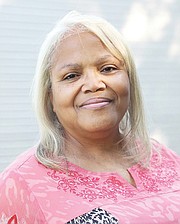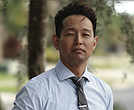Eureka!
FDA approves milestone treatments for sickle cell disease
Jeremy M. Lazarus | 12/14/2023, 6 p.m.

Two breakthrough gene therapies can now be used to treat and possibly cure sickle cell anemia, the genetic blood disorder that afflicts 100,000 mostly Black Americans and 20 million people worldwide.
But the announcement from the Food and Drug Administration of approval of the treatments — the first use of medicines to address an inherited disease — drew cheers and caution flags from those in the field.
“For many years, a bone marrow transplant has been the only transformative option for treating patients with sickle cell disease, and a limited one, as not all patients have a suitable donor,” said Dr. Alexis A. Thompson, chief of the Hematology Division at the Children’s Hospital of Philadelphia, one of the test sites.
“Now, after decades of limited progress in treating sickle cell disease, we have reached a historical moment with two new gene therapies,” Dr. Thompson enthused.
Those with the disease have oxygen-carrying red blood cells that look like the letter C. Unlike normal blood cells that are disc-shaped and flexible, the misshapen cells are less flexible, sticky and can clump together in smaller blood vessels, blocking the movement of blood and creating terrible pain and sometimes life-threatening conditions.
About 4,000 Virginians have the disease, with the majority living in Hampton Roads, according to the Sickle Cell-Virginia, the statewide association of people involved with the disease.
Dr. Wally R. Smith, who leads the adult sickle cell research and treatment clinic at Virginia Commonwealth University’s medical school and hospital, joined in celebrating the new therapies, but with caveats.
“It’s a great day for sickle cell disease,” Dr. Smith, the Florence Cooper Neal Smith Professor of Sickle Cell Disease and a VCU Health vice president of research, wrote in an email to the Free Press after learning of the FDA’s action on Dec. 8. At the time, he was attending the 65th annual meeting of the American Society of Hematology.
“African-Americans with sickle cell disease will get a treatment that is unavailable for any other disease in the world,” he continued.
He acknowledged that the cost could be a barrier. According to sickle cell advocates, these new one-time, single-dose therapies are expected to cost at least $1.2 million, and possibly more.
That is well above the price tag for a bone marrow transplant that averages $193,000 and can cost up to $400,000, according to the Philadelphia-based nonprofit Help Hope Live, that assists people to fundraise to cover their out-of-pocket costs for organ transplants.
Cost is already a barrier to existing sickle cell medications. For example, the cost of Oxbryta, a Phizer medication to increase red blood cell production, has jumped in cost from $2,200 a month five years ago to nearly $12,000 a month currently, according to Sickle Cell-Virginia.
Dr. Smith said that negotiations have begun with Medicaid, which is a mainstay insurance for many sickle cell sufferers, to determine if the new therapies can be covered given the success of trials.
One therapy involves taking stems cells from a patient, editing them with the CRISPR-cas9 to remove the gene that causes blood cells to sickle and reinserting them to make healthy cells.
In clinical trials, 29 of 31 patients receiving the treatment, or 93.5 percent, had no crises one year after receiving the treatment, the FDA stated.
The second therapy enables sufferers to produce new cells that resemble normal red blood cells, according to the FDA, which stated that 28 of 32 people receiving the treatment or 88% were reported to be free of the disease six to 18 months later.
Dr. Smith also stated that the new gene therapies are not for every sickle cell sufferer and would require “extra personnel to screen patients for eligibility.”
“These therapies will be hard to access,” he wrote.
Along with VCU Health, there are two other hospital-based adult clinics. VCU Health also operates one of the four hospital-based pediatric clinics for sickle cell children.
However, “in Virginia, the (new gene therapies) are likely only to be available at VCU, creating a potential competition between patients over who gets treated.”
Dr. Smith also expressed concern that the “emotional and physical burden on some patients will increase as they feel even more left out of the health care system” because the treatment is not available to them.
Others worry about access and availability as well, including Allison Coles-Johnson, a retired nurse who co-chairs the Richmond-area nonprofit, Finding A Cure for Sickle Cell Anemia.
Ms. Coles-Johnson called the new therapies an “excellent start,” but she said that there is a need to continue “research so that therapies like this can become more accessible and more attainable” for those with the disease.
At the moment, she said the new treatments are “cost prohibitive. Who will pay for it? Private insurers? Medicaid?”
Until that issue is resolved, she said the new treatments, no matter how promising, will remain “out of the reach of most with the disease."








